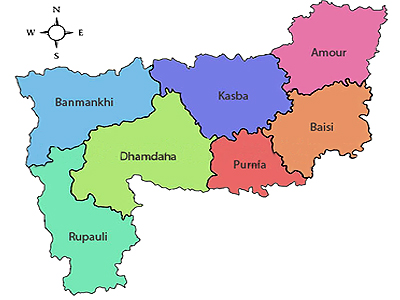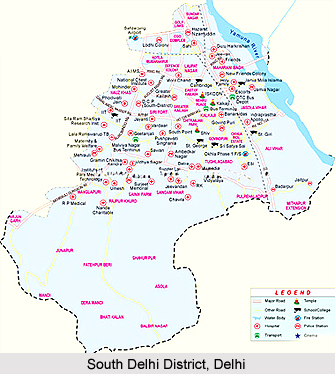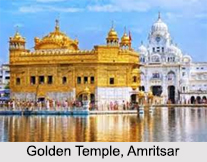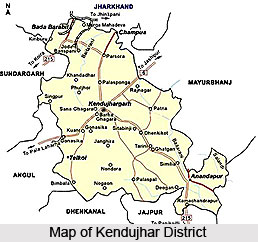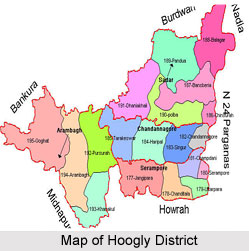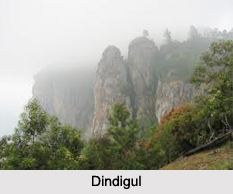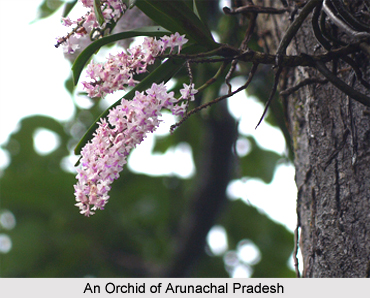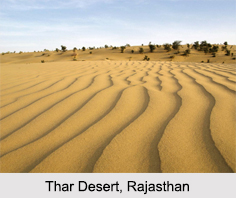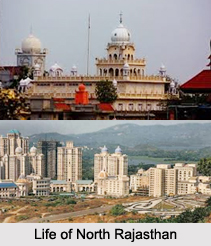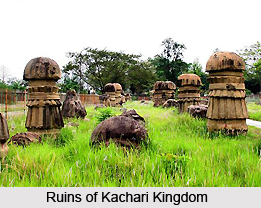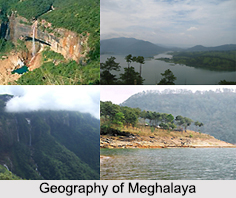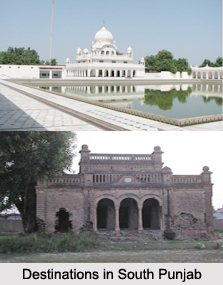About Cuttack District
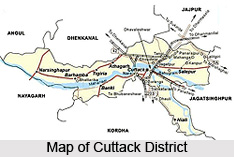 Cuttack District is one of the most important districts in the state of Orissa with its administrative headquarters located at Cuttack city. Legend suggests that the name Cuttack has been derived from the Sanskrit word `Kataka`, which means a military camp or a fort or a government seat, protected by an army. It is one of the oldest cities in India and the business capital of Orissa. Nestled at the land formed by the Mahanadi River in the north and Kathajodi in the south, Cuttack is a picturesque district. The entire district of Cuttack is well connected by railways and the nearest airport is the Biju Patnaik Airport. Cuttack has been enjoying all along the unique privilege of being the administrative and commercial nerve centre of Orissa .It was the seat of the commissioner of Orissa Division till 1936 and with the formation of the province of Orissa in that year it was exalted to be the headquarter of the new province.
Cuttack District is one of the most important districts in the state of Orissa with its administrative headquarters located at Cuttack city. Legend suggests that the name Cuttack has been derived from the Sanskrit word `Kataka`, which means a military camp or a fort or a government seat, protected by an army. It is one of the oldest cities in India and the business capital of Orissa. Nestled at the land formed by the Mahanadi River in the north and Kathajodi in the south, Cuttack is a picturesque district. The entire district of Cuttack is well connected by railways and the nearest airport is the Biju Patnaik Airport. Cuttack has been enjoying all along the unique privilege of being the administrative and commercial nerve centre of Orissa .It was the seat of the commissioner of Orissa Division till 1936 and with the formation of the province of Orissa in that year it was exalted to be the headquarter of the new province.
History of Cuttack District
 History of Cuttack in Odisha is deciphered from the excavated archaeological ruins maintained by Archaeological Survey of India, forts of medieval era and the houses of the Indian Freedom fighters.
History of Cuttack in Odisha is deciphered from the excavated archaeological ruins maintained by Archaeological Survey of India, forts of medieval era and the houses of the Indian Freedom fighters.
Early History of Cuttack
The early history of Cuttack dates back from the rule of Keshari dynasty. According to the historians, the present day Cuttack was established as a military cantonment by King Nrupa Keshari of Keshari dynasty in 989 AD. Madala Panji, a chronicle of the Jagannath temple of Puri also suggested the establishment of Cuttack during that era. The reign of Maharaja Markata Keshari was distinguished for the stone embank built to protect the new capital from flood in 1002 AD. After the decline of Keshari Dynasty, Cuttack came under the rule of Eastern Ganga Dynasty, who was responsible for the erection of Jagannatha Temple of Puri.
Medieval History of Cuttack
 Medieval History of Cuttack can be traced back from the rule of Kesharis. The earliest written history of Cuttack may go back to the Keshari dynasty. As stated by the distinguished historian Andrew Stirling, the modern Cuttack was established as a military cantonment by King Nrupa Keshari of Keshari dynasty in 989.
Medieval History of Cuttack can be traced back from the rule of Kesharis. The earliest written history of Cuttack may go back to the Keshari dynasty. As stated by the distinguished historian Andrew Stirling, the modern Cuttack was established as a military cantonment by King Nrupa Keshari of Keshari dynasty in 989.
Account of Madala Panji
Madala Panji, a chronicle of the Jagannath temple of Puri defines the existence of Cuttack in 700 to 900 AD. The reign of Maharaja Markata Keshari was distinguished for the stone embank built to protect the new capital from flood in 1002 CE.
Ganga Dynasty of Cuttack
The historical and archaeological evidence suggests Cuttack becoming capital of a kingdom founded by Raja Anangabhimadeva III of Ganga dynasty in 1211 CE. After the end of Ganga rule, Odisha passed to the hands of the Suryavamsi Gajapati dynasty (1434–1541 CE) under whom Cuttack continued to be the capital of Odisha. After the death of Raja Mukunda deva, the last Hindu king of Odisha, Cuttack first came under Muslim rule and later under Mughal Dynasty.
Decline of Muslim Rule in Cutttack
By 1750, Cuttack came under Maratha rule and it grew fast as a business centre being the convenient point of contact between the Marathas of Nagpur and the English merchants of Bengal.
Barabati Fort of Cuttack
The remains of the old Barabati Fort still exist in the heart of Cuttack and now the popular attraction in Odisha.
British Residence in Cuttack
Cuttack was occupied by the British East India Company in 1803 and later became the capital of Odisha division in 1816. From 1948 onwards, when the capital was shifted to Bhubaneshwar, the city remained the administrative headquarters for the state of Odisha.
Modern History of Cuttack
Modern History of Cuttack began with the intervention of British Empire in India against Maratha Empire. After Maratha regime, British East India Company began to rule Cuttack and made Cuttack a Princely State of India. From 1948 onwards, when the capital was shifted to Bhubaneswar, the city remained the administrative headquarters for the state of Odisha.
Cuttack was the nerve center of the nationalist movement during the Indian Struggle for Independence. During the course of freedom struggle, Swaraj Ashram of Sahebazada Bazaar was the center of all nationalistic activities. The indoctrinated followers of Mahatma Gandhi assembled in the Ashram to discuss the principles and ideals of Gandhi to expel the British from India. The growing militant and revolutionary movements in Cuttack appeared as a threat to the British and they appointed a Commissioner of Odisha division stationed in Cuttack till 1936. Cuttack has been serving as the administrative and the commercial hub of Eastern India since its advent.
Geography of Cuttack District
 Cuttack District is located between 84 degree 58 minutes to 86 degree 20 minutes east longitude and 20 degree 3 minutes to 20 degree 40 minutes north latitude. Covering an area of about 5915 sq km. Cuttack District is located at an altitude of about 15 metres and receives an annual rainfall of about 1443.9 mm. Its climate is hot and humid. During the summer the mercury rises as high as 40 degree Celsius while during the winters temperature falls as low as 10 degree Celsius. Summer starts at the end of March and lasts till June till the monsoons sets in. During the monsoons the city receives an average rainfall of 144.39 cm during September to mid October. Winter season starts from November and lasts till January and is characterised by chill winds from the north. Mid January to mid March is pleasant with moderate climate.
Cuttack District is located between 84 degree 58 minutes to 86 degree 20 minutes east longitude and 20 degree 3 minutes to 20 degree 40 minutes north latitude. Covering an area of about 5915 sq km. Cuttack District is located at an altitude of about 15 metres and receives an annual rainfall of about 1443.9 mm. Its climate is hot and humid. During the summer the mercury rises as high as 40 degree Celsius while during the winters temperature falls as low as 10 degree Celsius. Summer starts at the end of March and lasts till June till the monsoons sets in. During the monsoons the city receives an average rainfall of 144.39 cm during September to mid October. Winter season starts from November and lasts till January and is characterised by chill winds from the north. Mid January to mid March is pleasant with moderate climate.
Administration of Cuttack District
Administration of Cuttack District includes three sub-divisions and these are Cuttack, Athagarh, and Banki. The major development blocks of this district are Choudhar, Salepur, Tigiria, Mahanga, Nichintakoeli, Nima sahi, Damapara, Niali, Narasinghapur, Badampur, Baranga and Kantapara. The major cities around Cuttack are Bhubaneshwar, Puri and Konark.
Education in Cuttack District
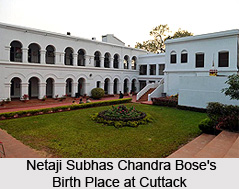 Cuttack has many famous educational institutions like the Ravenshaw College, Christ College, Stewart Science College and many more. Ravenshaw College has a prestigious history and is known for producing several top class officials and academicians. Several National research laboratories like the Central Rice Research Institute which is a premier institute of rice research in the whole of South Asia are also located here in Bidyadharpur. Shri Ramachandra Bhanja Medical College and hospital is the largest hospital in Orissa. Further, there are many engineering colleges in Cuttack.
Cuttack has many famous educational institutions like the Ravenshaw College, Christ College, Stewart Science College and many more. Ravenshaw College has a prestigious history and is known for producing several top class officials and academicians. Several National research laboratories like the Central Rice Research Institute which is a premier institute of rice research in the whole of South Asia are also located here in Bidyadharpur. Shri Ramachandra Bhanja Medical College and hospital is the largest hospital in Orissa. Further, there are many engineering colleges in Cuttack.
Art of Cuttack District
 Art of Cuttack district have greatly preserved the ancient heritage of the place through the various practices and rituals. The artwork of the district is especially famed for its fine and brilliant craftsmanship. These have not only gained nation wide popularity but have also been cherished by the people throughout the world. The various arts of the district including the textiles arts, metal arts and horn arts form an integral part of the district tourism. The celebrations of various festivals in the district are also unique in their own way. In addition to promoting fun and gaiety among the people, these celebrations also allure tourists from far off regions to experience the spirit of these festivities.
Art of Cuttack district have greatly preserved the ancient heritage of the place through the various practices and rituals. The artwork of the district is especially famed for its fine and brilliant craftsmanship. These have not only gained nation wide popularity but have also been cherished by the people throughout the world. The various arts of the district including the textiles arts, metal arts and horn arts form an integral part of the district tourism. The celebrations of various festivals in the district are also unique in their own way. In addition to promoting fun and gaiety among the people, these celebrations also allure tourists from far off regions to experience the spirit of these festivities.
Textile Art of Cuttack District
 The textile of the district exhibits a unique identity with unusual and bold patterns, luxuriant textures and exquisite blend of vibrant hues. Beautiful sarees are weaved by the artists of the district with the aid of hand operated looms in which fabrics are wondrously adorned with intricate designs. `Ikat` design is one of the most popular features of the textile industry of Cuttack district. The origin of Ikat, a technique of tie and dye, is enrooted in the maritime activities of South-East Asia practiced since ancient times.
The textile of the district exhibits a unique identity with unusual and bold patterns, luxuriant textures and exquisite blend of vibrant hues. Beautiful sarees are weaved by the artists of the district with the aid of hand operated looms in which fabrics are wondrously adorned with intricate designs. `Ikat` design is one of the most popular features of the textile industry of Cuttack district. The origin of Ikat, a technique of tie and dye, is enrooted in the maritime activities of South-East Asia practiced since ancient times.
Metal Art of Cuttack District
Among the metal arts of Cuttack district bell metal-wares are quite popular. Kansari is the traditional name given to the artisans of brass and bell metal. A number of decorative items and utensils have been made by them through years which involve both modern and ancient techniques. The items are used for religious, decorative and utilitarian purposes.
Horn Art of Cuttack District
Horn art of Cuttack district is greatly cherished throughout the place. These finely fashioned and richly textured art forms are made of horns of cows and buffaloes. Immense skill and imagination are required for crafting these exquisite arts.
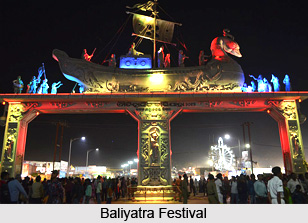 Numerous artefacts are formed by this art including lamp-stands, pipes, pen stands and a number of decorative items.
Numerous artefacts are formed by this art including lamp-stands, pipes, pen stands and a number of decorative items.
Filigree Art of Cuttack District
It is another unique art of Cuttack district known for its beautiful craftsmanship and meticulous designs. Silver filigree works known as `Tarakashi` is quite popular all over the district for its intricate and delicate designs. The origin of this art dates back to 15th century in Persian countries. During the Mughal era this art was greatly patronized but owing to the lack of marketing options it faced some setback. Filigree crafts can be categorized into Jari work, Siko work and Rose work. Jewelleries of filigree art are hugely popular among the people of the district for their fine finish and snowy glaze. Artefacts of religious purposes are also created. Filigree art of Cuttack district suit the choices of both traditional and contemporary people.
Culture of Cuttack District
Many festivals are celebrated in Cuttack district as well. The important festivals of Cuttack district are Dussehra and Bali Yatra. Dussehra is the festival of Goddess Durga. Baliyatra is the festival of remembering the ancient tradition of trade between Orissa and Java, Bali and Sumatra. It is held every year in the month of November. Among other celebrations the kite flying festival is very much attractive which is held in the month of January. Cuttack district is well known for its filigree works in silver, ivory and brass works. The silk and cotton Sarees of Cuttack known as `Katki are also very famous.
Economy of Cuttack
The economy of Cuttack is largely based on agriculture. About 76% of total population of the district draw their living from the agricultural sector. Since the rivers are rainfed, most of the time the cultivators have to depend on the irrigation. As a result majority of the gross cultivated land are irrigated. Rice, pulses, oil seeds, jute, Mesta, sugarcane, coconut and turmeric are important crops. The food crops mainly served the domestic requirements of the local people. The share of cash crops is no less important in the economic scenario of Cuttack. Most of the cash crops are exported which contributes to Cuttack`s economy on a large scale. District wise jute ranks second in Cuttack and the significant portion of the production of rice in Orissa comes from Cuttack. The national market of rice and jute highly supports the economy of Cuttack.
In the recent times, floods, droughts, low yield per hectare and division and fragmentation of holidays are the most important problems, which hinders the agricultural economy of Cuttack. The irrigation facility has been implemented in the planning period to meet the infrastructural demands, which induced a booming progress in the economy of Cuttack in the following years.
With the commencement of the financial years the Government was seriously considering the task of consolidating the foundation of shattered economy of India. A number of plans and schemes were implemented in several districts and provinces, of which Cuttack was one, to uplift their economic status. Right from that time the agro climatic region of Cuttack has been the key input for the development of agriculture, which in the long run supports the economy of Cuttack. In the recent years, the State government has proposed for the profitable utilization of the wasteland and the hilly areas, which are not conducive for the growth of the traditional crops. Hence the inland hilly areas of Cuttack presently are used for the cultivation of rubber. The primary benefit of the rubber cultivation is that the whole of the product is being exported, which provide a considerable amount to the economy of Cuttack.
Prawn Culture, in Cuttack has assumed a great deal of significance in 1982-83, following the brackish water prawn culture. Recently, Orissa Shrimp Seed Production Center (OSSP) has been established in Orissa, which controls the entire operation of the prawn culture. However the prawn cultivation presently demands an important position in the economic scenario of Cuttack.
On the sound foundation of agricultural economy, the industries provide a part of Cuttack`s financial set up. The medium scale engineering industry is the heart of the industrial economy of Cuttack. The storage of economically important mineral in close proximity, served the industries of Cuttack to a large extent. Moreover the river port of Paradeep provides a well-knit transport facility, which ensures the easy transport of the produced goods. However the allied industries of the agricultural sector and the small-scale cottage industries in the interior zones contribute to the economy of Cuttack. However the industrial sectors do not support the economy of Cuttack to the extent of agriculture. The industries, instead of participating in the export operations, mainly provide employment to the bulk of workforce in the core of Cuttack district and served the domestic economy of Cuttack.
Tourism in Cuttack
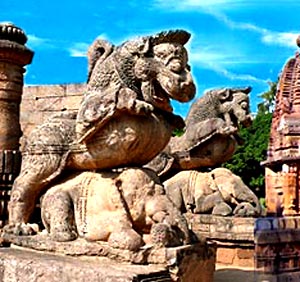 The tourism industry in Cuttack is developing rapidly, owing to various reasons like heritage, pilgrimage and natural beauty. Cuttack, the erstwhile capital of Orissa is gifted with immense historical interest endowed with the aroma of the antique past combined with the modernity of present.
The tourism industry in Cuttack is developing rapidly, owing to various reasons like heritage, pilgrimage and natural beauty. Cuttack, the erstwhile capital of Orissa is gifted with immense historical interest endowed with the aroma of the antique past combined with the modernity of present.
Cuttack is located in the eastern Indian state of Orissa around 30 km off Bhubaneswar.
The heart of the city happens to be the unique combination of both past and present that has helped the tourism industry to achieve a thriving prosperity in Cuttack. The tourism industry of Cuttack also served the economy of Cuttack greatly. The town situated at the tip of the delta formed by the rivers Mahanadi and the Kathajodi is a significant base for the touring activities especially because of its scenic beauty and the concentration of large number of interesting places in its lap.
Pilgrimage Tourism in Cuttack
The temple of Cuttack Chandi is the shrine of the presiding deity, which is principally visited by the Hindu pilgrims. Besides being important as a religious site in the tourism industry of Cuttack, the architectural trappings of the temple also attract thousands of tourists round the year. The temple is located south of Barabati area and is visited by many devotees everyday. The number of pilgrims to the temple during the festive seasons increases many times making the temple come alive with energy and devotion. Quadam-I- Rasool is the extant symbol of the Muslim rule in the city of Cuttack. The unique structure of the shrine is a subject of immense interest for the Muslim and the Hindus alike. Having a compound wall and towers at each corner has inside three mosques with beautiful domes and a Nawabat Khana (music gallery). This shrine is a prime object of admiration for the tourists.
The tourism industry of Cuttack flourishes to a large extent centering the places of profound interest in the heart of the town. In the recent times, the tourism industry of Cuttack shares a considerable amount to Cuttack`s economy. Cuttack has places that will appeal to all kinds of tourists. Paramhansnath Temple beckon pilgrims as well as enthusiastic travelers who wish to learn more about Indian traditions and religions. The temple is one of the main attractions of the city. Dedicated to Lord Shiva, it is situated on the outskirts of Cuttack. Paramhansnath Temple is famous for the large water hole. It is named as `Ananta Garva`. On holy occasions, the water from the hole is let out into the Sanctum Sanctorum causing the Sanctum Sanctorum to flood.
 Cuttack is famous for its stone revetment on the riverbanks, a great engineering marvel of the 11th century AD and a remarkable example of ancient technological skill or Orissa. Build by King Marakata Keshari; the Stone revetments show how advanced the technology and skills were even at that point of time. The revetments helped save the city form many floods and this became one of the reasons why Cuttack was chosen as the capital city. A new attraction to the city of Cuttack is the sprawling modern cricket stadium near Barabati Fort. The stadium holds many test and one-day international cricket matches nowadays.
Cuttack is famous for its stone revetment on the riverbanks, a great engineering marvel of the 11th century AD and a remarkable example of ancient technological skill or Orissa. Build by King Marakata Keshari; the Stone revetments show how advanced the technology and skills were even at that point of time. The revetments helped save the city form many floods and this became one of the reasons why Cuttack was chosen as the capital city. A new attraction to the city of Cuttack is the sprawling modern cricket stadium near Barabati Fort. The stadium holds many test and one-day international cricket matches nowadays.
Nature Tourism in Cuttack
Other than the places within Cuttack, there are also many surrounding areas that can be considered as excursion sites from this heritage city. Banki is situated around 92 km away from Cuttack. The place has the shrine of eight-armed Goddess Charchika on the bank of river Mahanadi. Chatia, 30 km, has several shrines and the remains of an ancient fort. Nandan Kanan Biological Park, on the way to Bhubaneswar, is the place with the highest population of white tigers in the country. Around 35 km away from Cuttack is Dhavaleswar, a scenic spot as well as a famous Shaivite center. It is a small island on the river Mahanadi and accommodation is available for the tourists. Some other places to visit around Cuttack are Naraja (15 km), Niali (47 km), and Madhab.
Leisure Tourism in Cuttack
Stone Revetment in Cuttack is a marvelous work of engineering far back at 11th century A.D still survives as the wonder in the tourism industry of Cuttack. The Stone Revetment is an example of the unparallel technical skill of Orissa in the historical past. Moreover, the ruins of the medieval fort of Barabati, is the quintessence of the erstwhile fortified capital city Cuttack .The key interest about the Barabati fort is the moat and the gate and the earthen mound of the nine-storeyed palace on the bank of River Mahanadi. The modern stadium at the adjoining areas of the Barabati fort is the additional attraction, for which is has gained popularity in the tourism industry of Cuttack.
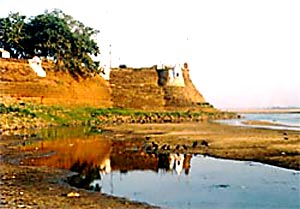 Visiting Information on Cuttack
Visiting Information on Cuttack
The city is well connected to other parts of Orissa and the country by the means of rail and road network. The climate of Cuttack is pleasant round the year with temperatures ranging between a minimum of 22.2°C in the winter to a maximum of 33.4°C in the summers. Annual average rainfall is around 144.39 cm. The best time to visit Cuttack is from middle of January to the middle of March. It is advisable to avoid the rainy season in the months of July to August. The nearest airport from Cuttack is Bhubaneswar, which is around 29 km away. Flights to other important cities in India can be taken from this airport. Cuttack is an important station on the Calcutta-Chennai main railway line and connected to Calcutta, Chennai, Delhi, and Mumbai through regular trains. National Highway No. 5 passes through Cuttack and makes it the most accessible city of Orissa. The city is connected by road with Bhubaneswar, Puri, and other important cities of the state. Buses are the main mode of transportation within the city. However, one can also get auto rickshaws and taxis on hire to move around the city.
The most famous festival celebrated in Cuttack is Durga Puja and uncountable tourists gather in this city to catch a glimpse of the grandeur. Due to its nearness to West Bengal and a large population of Bengali people residing here, Durga Puja in Cuttack is no less interesting than that of Kolkata. However, today many other festivals like Holi, Diwali, Shivaratri and others are celebrated. Several kinds of hotels and lodges that offer state of art facilities to the tourists round the year. Cuttack is also one of the major destinations of Orissa. Though extremely luxurious hotels with world-class facilities might be hard to find here but most of the hotels are above average. There are numerous budget hotels as well. OTDC (Orissa Tourism Development Corporation) has its own guesthouse near the city center. Other hotels that offer comfortable stay are Hotel Akbari Continental, Hotel Dwarika and Hotel Bombay Inn. Cuttack is arguably the best place to go for shopping. The city is famous for many things ranging from brass works to textile like woven silks and cotton. But what stands out are the filigree and silverware.
Monuments in Cuttack
 Monuments in Cuttack are the major attractions for people from all corners of India as well as various other parts of the world. Previously the capital of Orissa, Cuttack is situated at a distance of about thirty two kilometres to the north of the new capital city of Orissa, Bhubaneshwar. Cuttack was founded by Nripati in 920, who belonged to the Lion dynasty. The city has long been of military and commercial significance. Since its foundation Cuttack has witnessed several socio-political and cultural changes. The monuments constructed at different points of time mirror the deft craftsmanship that was prevalent in this city. Besides this, they also narrate the tale of the then contemporary societies.
Monuments in Cuttack are the major attractions for people from all corners of India as well as various other parts of the world. Previously the capital of Orissa, Cuttack is situated at a distance of about thirty two kilometres to the north of the new capital city of Orissa, Bhubaneshwar. Cuttack was founded by Nripati in 920, who belonged to the Lion dynasty. The city has long been of military and commercial significance. Since its foundation Cuttack has witnessed several socio-political and cultural changes. The monuments constructed at different points of time mirror the deft craftsmanship that was prevalent in this city. Besides this, they also narrate the tale of the then contemporary societies.
The stone revetment on the Kathjuri River dates back to the 11th century. The major features of the Barabati Fort are in ruins, with the exception of the fine arched Lion gateway which can still be seen there. The exact date of the original construction of the fort is uncertain, and it is assumed that the fort was constructed in the 14th century, but in 1750 a large round bastion and gateway were erected by the Muslim governor. Only fragments of the citadel survive, mainly, the gateway and a mosque devoted to Fateh Khan Rahim. The area of the fortress is now a mass of pits and mounds. Very few survive to convey the original grandeur. The fort was taken from the Bhonsla Raja of Nagpur by the British in the year 1803.
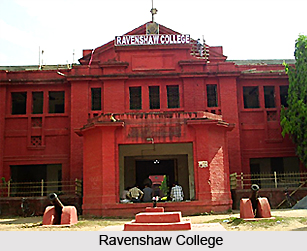 The Kadam-i-Rasui is a complex of three mosques, with each crowned by a fine dome. One can also find there a Naubhat Khana or Music Gallery and a shrine with a massive dome, which is regarded as the largest present in the state of Orissa. The footprints of the Prophet Muhammad are engraved on a circular stone within the building, which is venerated by both Muslims and Hindus. To the north of Cuttack, along the Taldanda Canal, is a complex of weirs. The Mahanadi Weir is over 1,950 meters in length and was constructed between the year 1863 and 1870 with the aim of preventing flood water to enter the Cuttack city.
The Kadam-i-Rasui is a complex of three mosques, with each crowned by a fine dome. One can also find there a Naubhat Khana or Music Gallery and a shrine with a massive dome, which is regarded as the largest present in the state of Orissa. The footprints of the Prophet Muhammad are engraved on a circular stone within the building, which is venerated by both Muslims and Hindus. To the north of Cuttack, along the Taldanda Canal, is a complex of weirs. The Mahanadi Weir is over 1,950 meters in length and was constructed between the year 1863 and 1870 with the aim of preventing flood water to enter the Cuttack city.
Ravenshaw College, the School of Engineering and the Museum are noteworthy historical buildings in Cuttack. Apart from these some of the famous temples in this city include the temple of Cuttack Chandi. This Cuttack temple is dedicated to the Goddess Chandi who is regarded as the supreme deity of the city and it is one of the major places of Hindu pilgrimages in India. It is situated to the south of Barabati Fort and devotees visit this temple every day to worship the Goddess. Another major temple in Cuttack city is the Paramhansnath temple. It is counted among the notable religious monument in Orissa. Devoted to Lord Shiva, the temple is located in the vicinity of the city of Cuttack. The Paramhansnath Temple is well-known for its large water hole, known as `Ananta Garva`. On auspicious or holy occasions, water is let out from the hole causing flood in the garbhagriha. Dhawaleshwar is a temple situated at about thirty seven kilometers from the central parts of Cuttack city. This temple is dedicated to the Lord Shiva.
Barabati Fort belongs to the medieval age and it is situated exactly eight kilometres from the middle of Cuttack city, atop a delta which has been created by the Mahanadi River to the north and the Kathajodi River (Mahanadi`s distributary) to the south and is at 14.26 meters above sea level.
The eight Shiva Pithas located in Choudwar, the 11th century temple of Dhabaleswar, the remains of Amaravati-Kataka Fort situated in Chhatia, Mahavinayak Shrine in Chandikhol, the beautiful Buddhist center of Naraj, shrines in the twin village of Niali-Madhava, the car festival and the Baladeva Temple in Kendrapara district and the temples of Jajpur are among the major historical places located in close proximity to the Cuttack city which can be visited while on a tour to Cuttack.


